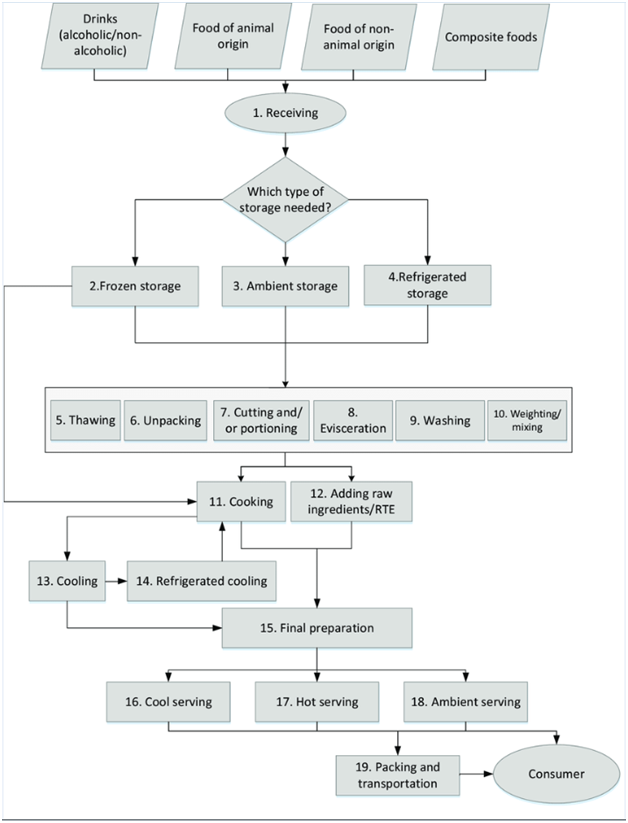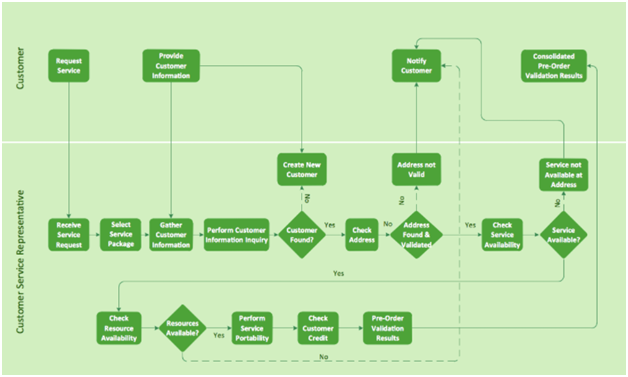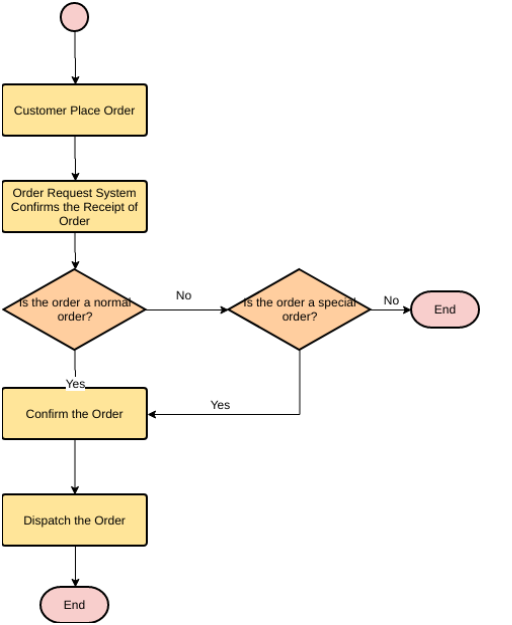Business Process Analysis & Modelling Report for Hotel Premier Inn
Question
Task:
Task Rationale
Organisations create goods and services through business processes. In this assignment you will put into practice (and simultaneously learn-by-doing) what you have learned about business process mapping and business process analysis (Topics 1 to 6). This includes drawing and analysing Business Process (BP) maps.
Task Description
There are two options to do this assignment.
Option 1. Select an organisation where you can investigate one of its main business processes. This organisation can be large or small; for profit or not for profit. You could select an organisation you work for, an organisation you have previously worked for, or an organisation where a relative/friend works. Then, select one key business process where you can access information for your report.
Option 2. You can select a process in your personal life, for example, focusing on conveyancing and the processes involved in achieving this; or the process you need to follow to obtain a drivers’ license. If you use this alternative, please send an email to the course convenor to check the adequacy of your selected process. Provide a brief account of the process you have in mind.
Answer
1. Introduction
This study is about the customers and relationship map, cross-functional maps, cross-functional maps performance measurements,business process analysis, flow Charts, Process synthesis from the hospitality industry kitchen to customer service. Customer experience refers to the support that an employer provides to its best customers in order to please them whether individuals buy and utilise the firm's merchandise. It aids in presenting clients with positive impressions well about the company and its performance. If someone wants to keep clients and grow their business, they must provide exceptional customer service. I worked at the hotel Premier Inn, and as a restaurant waiter, I worked in the Food and Beverage Service Department. The goal of this study is to provide a modular hotel company framework that can be used to run business activities. That approach will enable hotel and hospitality businesses to look at their operations from just a cross-functional management standpoint rather than a restricted operational one. Many of the flaws of the traditional departmentalization and longitudinal supervision may be overcome by a methodology approach to company and hotel management. The progression of a hotel organization from a lean manufacturing mechanism to a horizontal or study area emphasizes the same need to depart from properly functioning organisational structures in a restaurant and supervises senior executives' consideration to various corporate process steps, including operations, process improvements, and relational mechanisms. Regulations are a sequence of operations or collection of interrelated operations that require one or much more inputs and create conclusions while producing experience for hotel visitors.
2. Relationship map and explanations

Figure 1: Relationship mapping
(Source: Koutsoumaniset al. 2018)
Figure 1 shows the many elements of the Premier Inn hotel, from the kitchen to customer service, as well as the overt and covert customer-service linkages, as well as the outputs of the system, mostly in the service delivery system. It depicts the flow of service from the kitchen to the client. Drinks, animal-based food, non-animal-based food, and composite food are all shown on this map. The entire procedure is based on Premier Inn customer service standards for service delivery. Furthermore, it is self-evident that a hotel's success is primarily dependent on its customer service. If a client is satisfied, the related hotel company will expand faster, and as a restaurant waiter, I will be known as a professional and efficient waiter. The hotel service functional programme provides information from both the work experiences and inspection components by performing degree training. According to Koutsoumaniset al. (2018), many functions have been shown through the relationship mapping, from receiving to final preparation, by which I could obtain information about the whole technique of food delivery from making client table to gain relevant job experience. The associates function supplies colleagues to accounting hotel organisation employer Partners (suppliers), who then deliver retraining to the partner’s department. As per the views of Alrawadiehet al. (2021), the work immersion and testing function interchange skills and knowledge, leading to the restaurant’s waiter certification function. Finally, the relationship map function generates products that are attributed to clients as hotel services and workshops. According to figure 1, it has been observed that there has been no disconnect functionality by which it has been evident that, in terms of the hotel industry, from food making procedure to service delivery procedure all the functionalities are important. As illustrated by Appiah (2019), customer service has shown to have one of the greatest essential factors in the restaurant sector's growth. A level of customer program makes a consumer feel undesired and disconnected from the establishment. Service quality in restaurants is probably as crucial as the cuisine itself. According to Kim et al. (2019), consumer perceptions of a restaurant go beyond the pace of performance to include how waiters interact with customers, resolve their concerns, and now even prepare the food. Furthermore, according to figure 1, it has been evident that, from the kitchen to customer services, there could be present 19 steps and all steps were vital from receiving to packing and transportation.
3. Cross-functional map and explanations

Figure 2: Cross-functional map
(Source: Alketbiet al. 2020, two flows result)
The first stage in creating a Cross-Functional Flowchart is deciding that many ports that want to show what the column names will have to be personal preference or simply "which works most" determines whether vertical or horizontal swim lanes are used. Figure 2 depicts the workflow of restaurant experience among specific roles in a cross-functional map. As per the views of Alketbiet al. (2020), there are two flows that result from this action. The first flow gives a consumer service framework to the hotel, ensuring that the client mainstream media is aware and happy. The hotel then provides critical inputs (requirement gathering, service package) for the kitchen's functioning to service quality. The following flow of the operation refers here to hotel programme coursework duty, which undertakes four mandatory elements: supply, availability, order evaluation, and accomplishment. Therefore, the training content is used against the Premier Inn hotel facility to train colleagues how to be efficient kitchen servers via My Online Learning. According to Chen (2019), the standard survey then examines the affiliates' learning using test questions tests, with results created as a result, and it's all about the value chain analysis report. According to Ouyanget al. (2019), the same cross-functional extraction features, one thing I saw is that there may be numerous subsections existent across kitchen preparation to client delivery, implying that I would need to acquire information from top to bottom, from kitchen service to customer service. Proposed enhancements are included in the hereto cross-functional chart as red boxes (figure 2). In the hotel programme function, the first recommended change is to include a request support' activity. It will help maximise productivity by allowing colleagues to move to the next round in the quickest time feasible, therefore meeting customer expectations. Dieguezet al. (2021) opined that the second design enhancement is to include a 'give customer contact' feature in the summer internship element, which will aid affiliates in electronic communication methods and contacts in the accounting sector get sufficient relevant qualifications promptly.
4. Process analysis and explanations
There are various methods to categorise internal operations. Relevant processes, according to Dieguez et al. (2021), are those that produce value, present alternatives, and maintain value. The necessary action within one corporate strategy is deemed vital by Apte and Davis (2019): a) increased resistance and improvement, b) value increase revenues and c) moderate increasing activities. The critical business processes, according to Wang et al. (2018), include functional areas, enabling operations, and management procedures. Despite the many wide ranges of business systems and ability to compensate, all hospitality and tourism mechanisms can be categorised: running practises (operations that establish, begin producing, and capture value that hotel guests want), promoting operations (operations that would not keep producing result for hotel employees but are expected to commence an industry), and organisational changes. The hotel's four core operational procedures are: 1) hotel maintenance, 2) delivering ingredients, 3) passenger entrances and departing, and 4) creating and selling catering services. Understanding customers and activities, developing long-term strategy, designing hospitality services and goods, and marketing and selling are all supporting activities. Evaluating consumer requirements and wants, assessing customer loyalty, and reflecting changes in the market and potential aspirations are all part of understanding economies and businesses. As stated by Ahmed et al. (2021), observing the macro reality, determining the proposition and strategic direction, developing the organisation structure and interactions amongst business structures, and creating as well as setting objectives are the core functions in a developing strategic plan. The following are examples of the company's product system design: Innovate appropriate supplier concepts and blueprints, research, produce, and assess concept goods or services, improve current components, test operational efficacy of new or updated merchandise, preparation for execution, and manage the manufacturer application development. Promote and distribute seems to be the last along to, consisting of the following events: advertise goods or services to appropriate client categories, and operation customer bought.
A customer service agent is one of the two performance benchmarks that are best for determining the effectiveness of the property certification procedure. These actions will reinforce Premier Inn's significant advantage, simply linking their strategic alignment with business operations, allowing me to increase my scalability. Lam and Law (2019) highlighted several critical evaluation criteria for managing a process, encompassing delivering procedure, demonstration, liquidity, and waiter efficiency. The first similar methodology, effectiveness, will be used to assess how well the hospitality sector converts employees into Premier Inn credentialed employees. Implementing a strategy in customer-oriented corporations creates efficient capacity utilisation, cost benefits, protracted success, and prosperity while decreasing bad strategic planning. The action wherever Premier Inn underwrites the employee associate, depicted in figure 2 with just a green dotted line, has been the best place to monitor effectiveness. Because the method' outputs will not have the same component, a partial assessment of performance would also be the best fit; Premium Inn is calculated per customer, specifications are estimated per requirements, and retraining is defined per hour.
5. Flowchart

Figure 3: Flow chart
(Source: Nair, 2019)
According to the flow chart, it has been observed that this study is all about customer-oriented processes from kitchen princess to customer delivery process. Furthermore, this flow chart illustrates that the whole process starts from the customer from placing the order to dispatching the order from the correspondent hotel’s kitchen. This upper mentioned flow chart mainly illustrates that the whole process depends on the customer’s order. According to my perspective, it links the customer's three most critical engagements: When ordering dine-in, the individual taking your order has the opportunity to provide a very unique service. While it comes to food ordering, some well trying to order system will assist customers to feel at ease when placing orders and reviewing them by which the restaurant waiter like me could deliver the ordered food on time to the correspondent customer service. As per the views of Nair (2019), the fundamental goal of a meal receiving chapter is to enable consumers a method to order food at a restaurant without having to go to the establishment. According to the current situation, Premier Inn is one of the largest hotel chains in the world, so the thing is that, according to the flow chart, every organisation must follow the process outlined in the flow chart so that a restaurant waiter like me can easily deal with the food ordering system from the kitchen to the customer's table.
6. Process synthesis
Using diagrams, it depicts the numerous aspects of the Premier Inn hotel, from either the kitchen to deal with customers and other internal and external consumer connections. The overall process relies on Premier Inn's consumer service execution standards. The results show that there will be as many as 19 phases, most of which were critical, from reception to loading and shipment. When a customer submits a request for an accredited Premier Inn hotel to that same mobile food validity features, the pipeline is triggered, and the behaviour of the viewpoint, also including me, a cafeteria employee, is influenced. As per the views of Duric and Potonik (2021), the first flow provides the hotel with a customer experience structure, guaranteeing that the customer corporate media is informed and satisfied. Following that, the hotel provides important inputs (provision collecting, service packaging) for both the kitchen's operation to ensure the customer experience. The following flow pertains to the guest programme curriculum obligation, which involves four essential components: supply, accessibility, order processing, and completion. Red boxes should be added to the cross-functional graphic to represent potential upgrades. There are a few key differences between operating and supporting internal operations. Both groups of factors have a series of interconnected and linked actions that convert inventory into throughput. There is a beginning and an endpoint to operation and enabling functions, with parameters that can be described with great accuracy and minimum crossover. Consumers or clients for these procedures might be private or public to a company.
References
Ahmed, M., Guo, Q., Qureshi, M.A., Raza, S.A., Khan, K.A. and Salam, J., 2021. Do green HR practices enhance green motivation and proactive environmental management maturity in hotel industry. International Journal of Hospitality Management, 94, p.102852.
Alketbi, S., Alshurideh, M. and Al Kurdi, B., 2020. THE INFLUENCE OF SERVICE QUALITY ON CUSTOMERS'RETENTION AND LOYALTY IN THE UAE HOTEL SECTOR WITH RESPECT TO THE IMPACT OF CUSTOMER’SATISFACTION, TRUST, AND COMMITMENT: A QUALITATIVE STUDY. PalArch's Journal of Archaeology of Egypt/Egyptology, 17(4), pp.541-561. Alrawadieh, Z., Alrawadieh, Z. and Cetin, G., 2021. Digital transformation and revenue management: Evidence from the hotel industry. Tourism Economics, 27(2), pp.328-345. Appiah, J.K., 2019. Community-based corporate social responsibility activities and employee job satisfaction in the US hotel industry: An explanatory study. Journal of hospitality and tourism management, 38, pp.140-148.
Apte, U.M. and Davis, M.M., 2019. Sharing economy services: Business model generation. California Management Review, 61(2), pp.104-131. Chen, L.F., 2019. Hotel chain affiliation as an environmental performance strategy for luxury hotels. International Journal of Hospitality Management, 77, pp.1-6. Dieguez, T., Ly, N.T., Ferreira, L.P. and Silva, F.J.G.D., 2021, June.Digital Customer Network Strategy Influences on Hotel Business.Business process analysis In International Conference Innovation in Engineering (pp. 420-431). Springer, Cham. Duric, Z. and PotonikTopler, J., 2021. The Role of Performance and Environmental Sustainability Indicators in Hotel Competitiveness. Sustainability, 13(12), p.6574. EFSA Panel on Biological Hazards (BIOHAZ), Koutsoumanis, K., Allende, A., AlvarezOrdóñez, A., Bover Cid, S., Chemaly, M., Davies, R., Herman, L., Hilbert, F., Lindqvist, R. and Nauta, M., 2018. Hazard analysis approaches for certain small retail establishments and food donations: second scientific opinion. EFSA Journal, 16(11), p.e05432.
Kim, Y.H., Barber, N. and Kim, D.K., 2019. Sustainability research in the hotel industry: Past, present, and future. Journal of Hospitality Marketing & Management, 28(5), pp.576-620.
Lam, C. and Law, R., 2019. Readiness of upscale and luxury-branded hotels for digital transformation. International Journal of Hospitality Management, 79, pp.60-69.
Nair, G.K., 2019. Dynamics of pricing and non-pricing strategies, revenue management performance and competitive advantage in hotel industry. International journal of hospitality management, 82, pp.287-297.
Ouyang, Z., Wei, W. and Chi, C.G., 2019. Environment management in the hotel industry: does institutional environment matter. International Journal of Hospitality Management, 77, pp.353-364.
Wang, J., Chen, M.H., Fang, C.Y. and Tian, L., 2018. Does board size matter for Taiwanese hotel performance Agency theory or resource dependence theory. Cornell Hospitality Quarterly, 59(4), pp.317-324.












